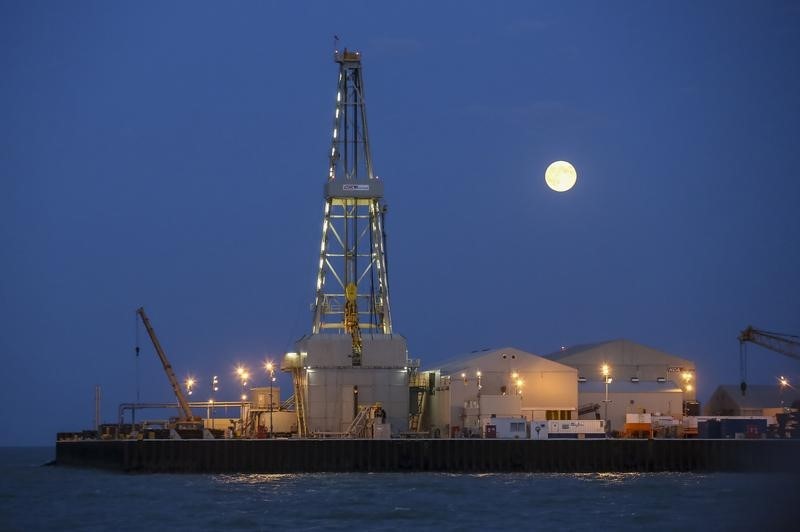Investing.com - Crude oil prices gained in Asia on Tuesday led by Brent crossing $65 a barrel for the first time since 2015 as a shutdown of a key pipeline led to a spike in the global benchmark and investors looked ahead to US industry inventory estimates on crude and refined products.
On the New York Mercantile Exchange crude futures for January delivery rose 0.41% to $58.23 a barrel, while on London's Intercontinental Exchange, Brent gained 0.56% to trade at $65.08 a barrel.
The American Petroleum Institute reports its estimates of US crude and refined product stocks last week with a 3.780 million barrels draw in crude and a build of 416,000 barrels in distillates and a 2.184 million barrels gain in gasoline supplies expected.
The estimates will be followed on Wednesday by official data from the Energy Information Administration.
Overnight, Brent oil prices settled sharply higher on Monday amid supply disruptions after a major North Sea pipeline shut for repairs, while signs of rising US production capped gains in crude oil prices.
The Brent-WTI spread rose to the widest since October, as Brent prices surge after the shutdown of the Forties pipeline, which carries 40% of North Sea oil and gas, sparked expectations of tightening supply.
The shutdown comes four days after the pipeline operating capacity was cut following reports of “small” leak last week.
In the U.S., meanwhile, gains in the WTI crude oil futures were somewhat capped amid signs of growing output from US producers.
The number of oil rigs operating in the US rose for the third consecutive week, said oil field services company Baker Hughes on Friday.
The weekly rig count is an important barometer for the drilling industry and serves as a proxy for oil production and oil services demand. A higher rig count tends to signal a further rise in U.S. production.
Earlier in the session oil prices shrugged off somewhat bearish comments from UAE Energy Minister Suhail bin Mohammed al-Mazroui, who said OPEC and non-OPEC producers plan to announce in June an exit strategy from global supply cuts but stressed that the pact would not end by then.
